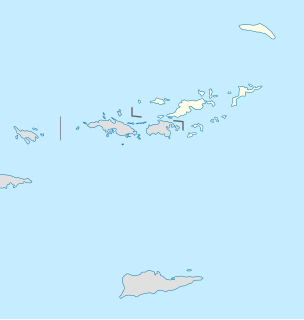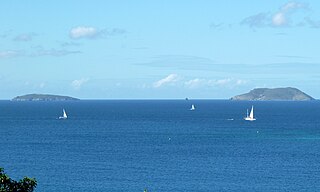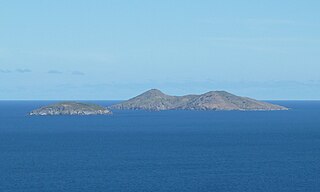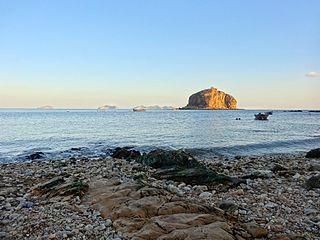
The British Virgin Islands are located in the Caribbean, between the Caribbean Sea and the North Atlantic Ocean, east of Puerto Rico.Its geographic coordinates are 18°30′N64°30′W. Map references include Central America and the Caribbean. The area totals 151 km² and comprises 16 inhabited and more than 20 uninhabited islands; includes the islands of Tortola, Anegada, Virgin Gorda and Jost van Dyke. There are no bodies of water on the land. There are no land boundaries. There is 80 km of coastline. Maritime claims include 3 nmi of territorial sea and exclusive a 200 nmi fishing zone. It has a tropical, humid climate, with temperatures moderated by trade winds. Its terrain consists of coral islands, and is relatively flat. It has volcanic islands and is steep and hilly. Its lowest point is the Caribbean Sea and its highest point is Mount Sage at 521 metres (1,709 ft) above sea level. Its natural resources are negligible. In terms of land use, it is 20% arable land, 6.67% permanent crops and 73.33% other as of a 2005 figure. Its natural hazards consist of hurricanes and tropical storms from July to October. There is limited natural fresh water resources. It has strong ties to nearby U.S. Virgin Islands and Puerto Rico.

The Virgin Islands National Park is an American national park preserving about 60% of the land area of Saint John in the United States Virgin Islands, as well as more than 5,500 acres of adjacent ocean, and nearly all of Hassel Island, just off the Charlotte Amalie, Saint Thomas harbor.

Saint John is one of the Virgin Islands in the Caribbean Sea and a constituent district of the United States Virgin Islands (USVI), an unincorporated territory of the United States.

Cruz Bay, U.S. Virgin Islands is the main town on the island of Saint John in the United States Virgin Islands. According to the 2000 Census, Cruz Bay has a population of 2,743 people.

Green Cay is an uninhabited island of the British Virgin Islands in the Caribbean. It sits between the eastern tip of Little Jost Van Dyke and Tortola. It is 14 acres (6 ha) in area.

Joost van Dyk was a Dutch privateer who was one of the earliest European settlers in the British Virgin Islands in the seventeenth century, and established the first permanent settlements within the Territory. The islands of Jost Van Dyke and its smaller neighbor Little Jost Van Dyke, as well as Little Dix Bay on Virgin Gorda island, are named after him.

Little Jost Van Dyke is one of the British Virgin Islands. It is a small island on the east end of the island of Jost Van Dyke. Like Jost Van Dyke, it takes its name from the Dutch privateer Joost van Dyk. It is the location of the Diamond Cay National Park, which includes the nesting grounds of wild boobies, terns and pelicans.

A Painkiller is a rum cocktail trademarked by Pusser's Rum Ltd, their signature drink. It is often associated with Tiki establishments. The Painkiller is a blend of Pusser's rum with 4 parts pineapple juice, 1 part cream of coconut and 1 part orange juice, well shaken and served over the rocks with a generous amount of fresh nutmeg on top. It may be made with either two, three or four ounces of Pusser's dark rum.
Erythrina eggersii is a vine or tree in the Fabaceae family which is commonly known as cock's-spur, espuelo de gallo, or pinon espinoso. It is native to Puerto Rico, the British Virgin Islands and the U.S. Virgin Islands, where it is threatened by the act of habitat loss.

Great Tobago is an uninhabited island of the British Virgin Islands in the Caribbean, located, along with sister island Little Tobago, approximately six miles west of Jost Van Dyke. The Tobagos are the westernmost of the British Virgin Islands.

Little Tobago is an uninhabited island of the British Virgin Islands in the Caribbean, located, along with sister island Great Tobago, approximately six miles west of Jost Van Dyke. The Tobagos are the westernmost of the British Virgin Islands.

Sandy Cay is an uninhabited island of the British Virgin Islands in the Caribbean. It is located between Tortola and Jost Van Dyke. The island was owned by the Laurance Rockefeller Estate. On 1 May 2008, ownership of the island was transferred to the National Parks Trust of the Virgin Islands.

Mount Sage National Park is a protected area of the British Virgin Islands. It is named after the highest peak of the island of Tortola, Mount Sage. The Mount Sage volcanic peak rises to a height of 1,716 feet (523 m), and is thus the highest point in all of the Virgin Islands. The park is located to the southwest of the island group's capital, Road Town. The park, which includes the mountain range, extends over an area of 96 acres (39 ha). The vegetation is of semi-rain forest type. There are many trails for trekking and hiking.
Virgin Islander culture reflects the various peoples that have inhabited the present-day British Virgin Islands and U.S. Virgin Islands throughout history. Although the territories are politically separate, they maintain close cultural ties.

The following outline is provided as an overview of and topical guide to the British Virgin Islands:
Jodocus, sometimes Josse, Joos, Joost, Joest, Jost, or Jobst is a given name and a family name. Other names such as Jocelyn, Jocelyne, Josselin, Josseline, or also Josquin and Jospin derived from it.













